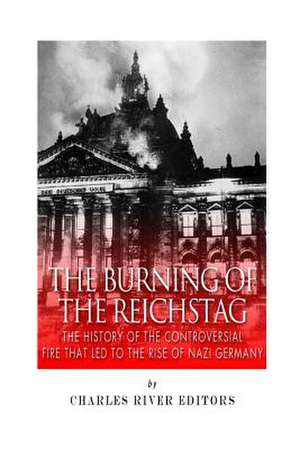The Burning of the Reichstag
Autor Charles River Editorsen Limba Engleză Paperback
Preț: 46.42 lei
Nou
Puncte Express: 70
Preț estimativ în valută:
8.88€ • 9.24$ • 7.33£
8.88€ • 9.24$ • 7.33£
Carte tipărită la comandă
Livrare economică 14-28 aprilie
Preluare comenzi: 021 569.72.76
Specificații
ISBN-13: 9781505862256
ISBN-10: 1505862256
Pagini: 46
Dimensiuni: 152 x 229 x 3 mm
Greutate: 0.08 kg
Editura: CREATESPACE
ISBN-10: 1505862256
Pagini: 46
Dimensiuni: 152 x 229 x 3 mm
Greutate: 0.08 kg
Editura: CREATESPACE
